The Land Of China -- Explore by Province
Liaoning
Liaoning is located in the southern part of Northeast China bordering on the Yellow and Bohai Seas in the south. With an area of 145,900 square kilometers, Liaoning has a continental monsoon climate. The province has a population of 40,670,000 and includes such ethnic groups as the Han, Manchurian, Mongolian, Muslim, Korean, and Xibe. With its capital set in Shenyang, the Lining Province contains 14 cities and 44 counties. It is one of the most important industrial bases of China.
 the Mountains of Liaoning
the Mountains of Liaoning
|
Both mountains and sea contribute to the province's great scenery. The Qian Mountians and Mount Phoenix have become two famous scenic areas. The Karst - formulated Cave at Benxi with an underground river also forms a rare scene in North China. Along the 2,200-kilometer-long coastal line of the Liaodong Peninsula, there are many beaches and summer resorts, with Dalian Beach being ranked as the best. There are also many natural and human intellectual tourist resorts along the Yalujiang River, inlcuding the natural preserves of the Celestial Cave, Mount Laotudingzi, Mount Yiwulu, and the well-known Snake Island near Lushunkou.
As the birthplace for the Manchurias, Liaoning has relics and ruins of the Qing Dynasty. The Shenyang Imperial Palace is a well-preserved imperial palace second only to Beijing's Forbidden City. Famous historical and cultural cities of China in Liaoning include Shenyang, Dalian, Anshan, and Wushun. National key scenic areas in the province include the Qian Mountains, the Yalujiang River, the Xingcheng Beach, the Golden Rock Beach, the Dalian Beach, Lushunkou Port, the Phoenix Mountain, and the Cave at Benxi.
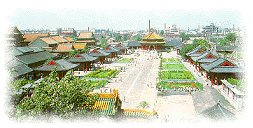 the Shenyang Imperial Palace
the Shenyang Imperial Palace
|
The Shengyang Imperial Palace was built in 1625 and is considered to be one of the best imperial residences in the country. The Imperial Palace was built for Nuerhachi (1559-1626) and Huangtaiji (1592-1643), two founding emperors of the pre-Qing Dynasty period. Located in the center of the old city of Shenyang, the palace covers an area of 60,000 square meters with about 300 rooms in 70 buildings. Among these buildings are the Chongzheng (Supreme Politics) Hall, which had been the throne hall; the Phoenix Tower, which was the highest of Shenyang at the time; and Dazheng (Grand Politics) Hall, which was the first hall constructed of the palace complex. The former imperial residence embodies a harmonious blend of the Han, Mongol, and Manchu architectural styles.
The Museum of Steam Locomotives is the largest of its kind in China, having an area of 10,000 square meters. It is located between the Sujiatun Marshalling Yard and Shenyang Railway Bureau. On display are more than a dozen steam locomotives made at the turn of the century and up to the fifties by the United States, Japan, the USSR, Czechoslovakia, Poland, Germany, Romania, Belgium, and China. Here, tourists may drive a steam locomotive for a short distance, sharing the experience of an engine driver; they may also visit a rolling stock plant or a dispatcher's office.
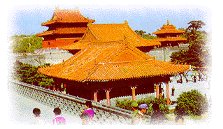 the Zhaoling Tomb
the Zhaoling Tomb
|
The Zhaoling Tomb is the largest among the three Qing imperial tombs in the Northeast. It contains the Qing dynasty founder Huangtaiji and his wife and concubines. Built in 1643, it is also called the Northern Tomb due to its location in the north of Shenyang and covers an area of 45,000 square meters. It consists of a fortress, a guard tower, the Long'an (Boundless Grace) Hall, the Altar Hall, the Tablet Pavilion, the Tumulus, roadways, ornamental columns, and marble animals. The architectural style of Zhaoling is a remarkable combination of the imperial tomb construction of the ancient Hans and the early Qing castle-type building.
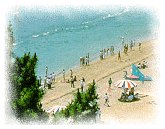 the Dalian Beach
the Dalian Beach
|
The Dalian Beach lies on the southern seashore of Dalian City and is a famous summer resort. Along the 30-kilometer coast highway are scenic spots such as the Bangchui (Hammer-Shaped) Islet, Tiger Beach Park, Xiuyue (Crescent) Hill, Fu Family Village, Baiyun (White Cloud) Heights, Xinghai (Next of Stars) Park, and the Heishi (Black Rock) Reef. Tourists may swim in the sea, tan on the beach, gather beautiful shells in the shallows, fish on the rocks, or enjoy a nice seafood feast.
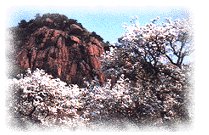 the Qian Mountains
the Qian Mountains
|
Qian Shan (Qian Mountain) is located 20 kilometers southeast of the city of Anshan and is a well-known scenic spot of Northeast China. The rows of lush green peaks are studded with jagged rocks of peculiar shapes. Half-hidden behind the ancient conifers are Taoist and Buddhist monasteries and nunneries as well as pagodas and steles that were erected during the Ming (1368-1644) and Qing (1644-1911) Dynasties when the two beliefs held much sway over the imperial court.
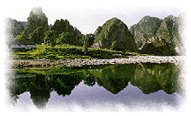 the Bingyu Valley
the Bingyu Valley
|
The Bingyu Valley lies 200 kilometers north of Dalian Beach. It is a 50,000,000-square-meter primeval forest preserve with places of interest including Skylark Peak, Xiaoyu (small) Valley, the Yingna River, and the Longhua (Dragon Splendour) and Huaguo (Orchard) Mountains. There is a certain primitive simplicity and rustic charm in the whole area that attracts lovers of nature to linger about, making them reluctant to leave.



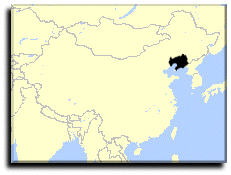
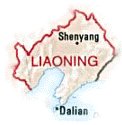









 Chinese Culture
Chinese Culture